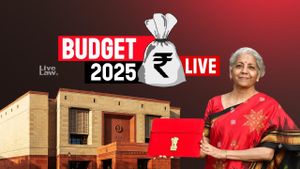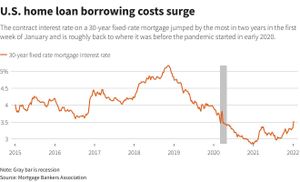The Indian government introduced its Union Budget for the 2025-26 fiscal year on February 1, and it involves significant changes aimed at bolstering the aviation sector, primarily through the modification of the UDAN scheme. This scheme, which stands for "Ude Desh Ka Aam Naagrik," is set to connect 120 new destinations over the next decade, enhancing regional connectivity and making air travel more accessible.
Finance Minister Nirmala Sitharaman announced the government's commitment to air travel accessibility, stating, "Inspired by the success of UDAN, which has already operationalized 619 routes connecting 88 airports including two water aerodromes and 13 heliports, the modified scheme will aim to carry 40 million additional passengers within the next ten years." The allocation for the UDAN scheme has been set at ₹530 crore for the upcoming fiscal year, down from ₹800 crore the previous year.
This ambitious modification of the UDAN initiative has drawn commendations from various industry leaders. Ajay Singh, Chairman and Managing Director of SpiceJet, noted the transformative potential of the revised plan, saying, "With the launch of this modified scheme... the aviation landscapes is set for a transformative shift. This initiative will not only make air travel more accessible to remote regions but will also drive economic growth and tourism, empowering local economies."
Under the revised terms, the scheme will also support helipads and smaller airports, thereby extending its reach to hilly and aspirational districts, particularly in Northeastern India. The focus on enhancing infrastructure resonates with other airline executives as well. Pieter Elbers, CEO of IndiGo, articulated the overarching vision by stating, "Investment in developing world-class airports, enhancing regional connectivity, capacity upgrades, procedures, and streamlined visa facilities will play a key role... to develop India as a global aviation hub." His comments highlight the significant promise these budget allocations hold for India’s aviation future.
The budget also lays out plans for new greenfield airports, capitalizing on the existing infrastructure and the momentum generated by the UDAN initiative. Reports indicate rising interest and improvements are anticipated, especially with commitments to augment connectivity at airports such as Patna’s. Aloke Singh, Managing Director of Air India Express, expressed satisfaction with the budget, which he called "forward-looking and middle-class-friendly," emphasizing the strategic investments made to boost overall air travel accessibility.
On the tourism front, key measures announced are expected to increase discretionary travel spending, both domestically and internationally. The government is streamlining e-visa facilities and introducing visa fee waivers for certain tourist groups, aimed at attracting more international visitors to India. Industry stakeholders have pointed out the need for these reforms, which some feel have long been overdue. Ramendra Verma from Grant Thornton Bharat remarked on the broader ramifications, stating, "The modified UDAN scheme will significantly boost regional connectivity, fostering economic growth by enhancing trade, tourism, and investment opportunities across underserved areas."
Beyond the proposed changes to air travel and tourism initiatives, various hotel associations and travel industry players are setting elevated expectations for the future. The Hotel Association of India articulated sentiments echoing those of Ithura, emphasizing the function of timely execution of government support for achieving long-term tourism ambitions. The government’s optimism, paired with explicit measures to develop 50 tourist destinations, nurtures hope for the industry to recover post-pandemic impacts.
Analysts noted adjustments to tax regulations, particularly the increase of tax collected at source (TCS) thresholds, which means travelers can benefit from lowered costs on overseas trips. This change strives to boost the travel sector's appeal and enhances the favorable positioning of the industry within the broader economic framework outlined by the budget. Long sought-after institutional changes like the recognition of tourism as "industry status" remain unresolved. Yet, industry leaders are optimistic for the future, asserting the right framework is key to unlocking potential growth.
Reaction to the budget has been mixed among those within the aviation sector. While there is cheering for established positional advantages created by the UDAN scheme, others are urging for more stimulus measures to support immediate recovery post-COVID-19. Jyoti Mayal, Chairperson of the Tourism and Hospitality Skill Council, concluded with optimism, stating, "The budget lays a strong foundation for India's travel and tourism industry, with some much-needed initiatives shaping its future." The essence of the Union Budget 2025 remains centered on developing accessibility, tourist engagement, and economic uplift across numerous sectors, enhancing both connectivity and local economies significantly.



